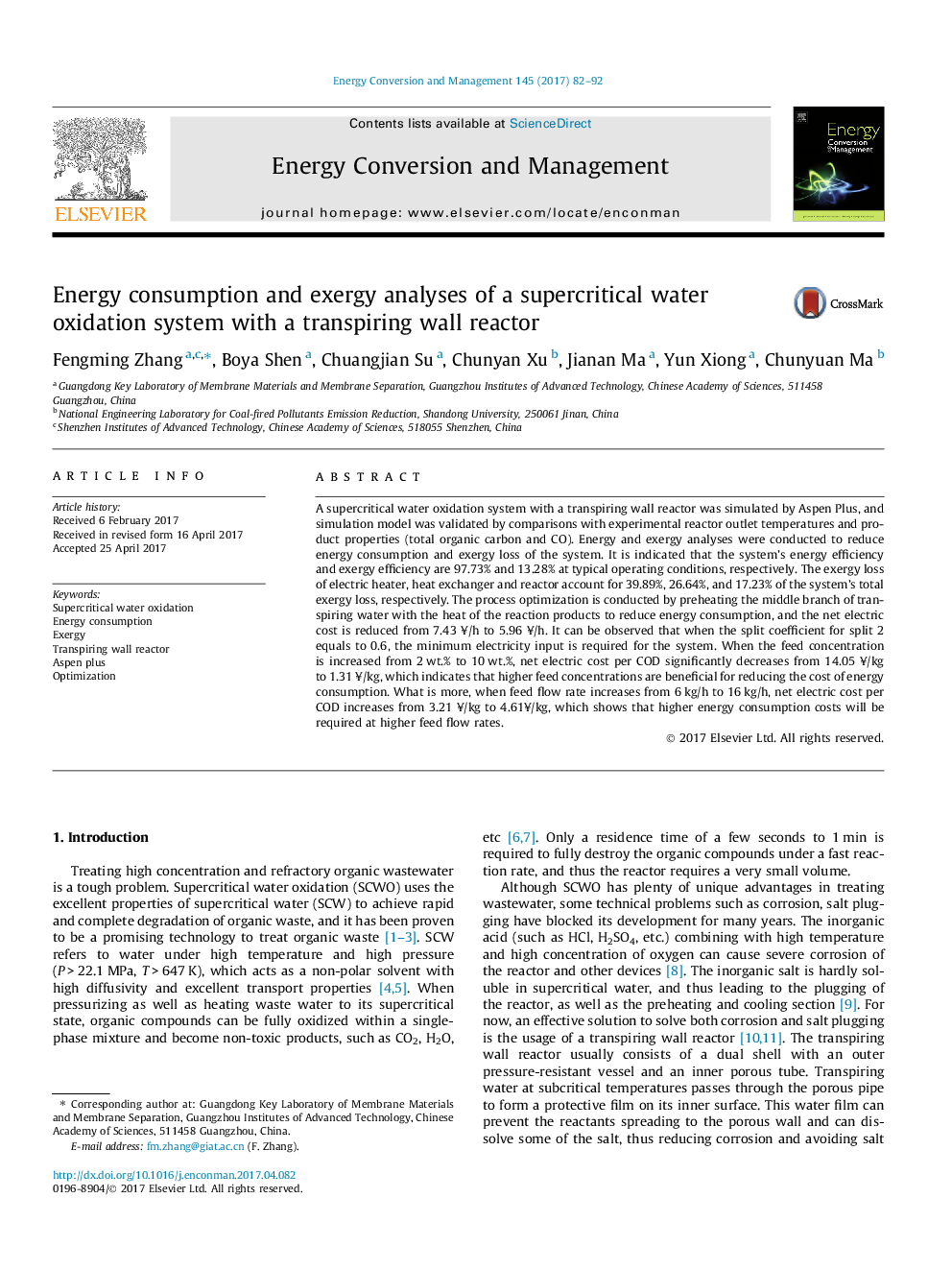| Article ID | Journal | Published Year | Pages | File Type |
|---|---|---|---|---|
| 5012748 | Energy Conversion and Management | 2017 | 11 Pages |
Abstract
A supercritical water oxidation system with a transpiring wall reactor was simulated by Aspen Plus, and simulation model was validated by comparisons with experimental reactor outlet temperatures and product properties (total organic carbon and CO). Energy and exergy analyses were conducted to reduce energy consumption and exergy loss of the system. It is indicated that the system's energy efficiency and exergy efficiency are 97.73% and 13.28% at typical operating conditions, respectively. The exergy loss of electric heater, heat exchanger and reactor account for 39.89%, 26.64%, and 17.23% of the system's total exergy loss, respectively. The process optimization is conducted by preheating the middle branch of transpiring water with the heat of the reaction products to reduce energy consumption, and the net electric cost is reduced from 7.43 ¥/h to 5.96 ¥/h. It can be observed that when the split coefficient for split 2 equals to 0.6, the minimum electricity input is required for the system. When the feed concentration is increased from 2 wt.% to 10 wt.%, net electric cost per COD significantly decreases from 14.05 ¥/kg to 1.31 ¥/kg, which indicates that higher feed concentrations are beneficial for reducing the cost of energy consumption. What is more, when feed flow rate increases from 6 kg/h to 16 kg/h, net electric cost per COD increases from 3.21 ¥/kg to 4.61¥/kg, which shows that higher energy consumption costs will be required at higher feed flow rates.
Keywords
Related Topics
Physical Sciences and Engineering
Energy
Energy (General)
Authors
Fengming Zhang, Boya Shen, Chuangjian Su, Chunyan Xu, Jianan Ma, Yun Xiong, Chunyuan Ma,
